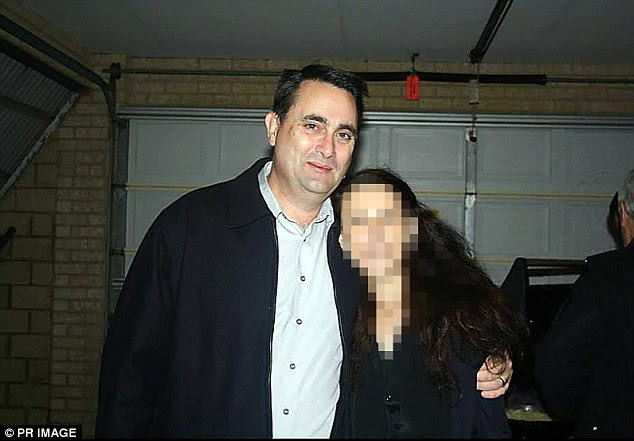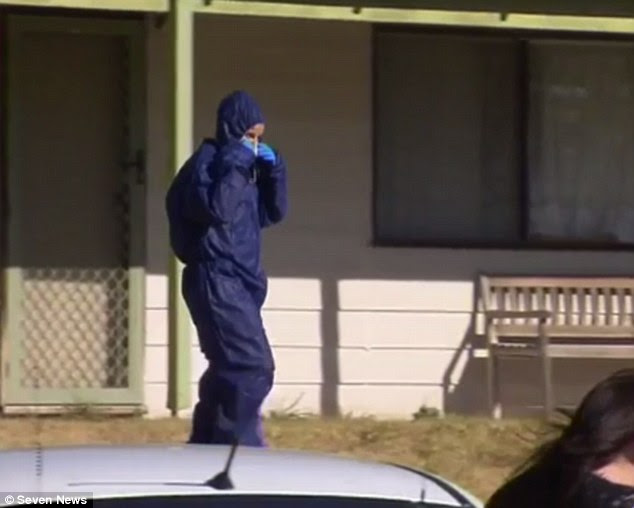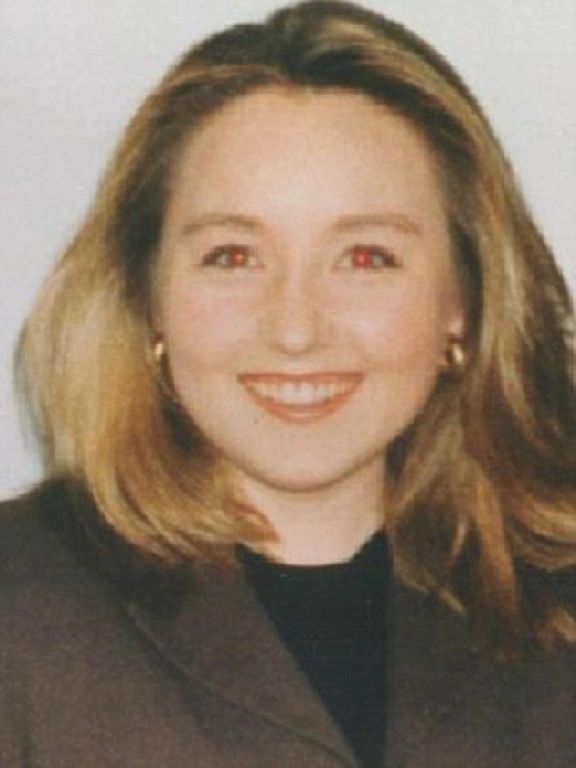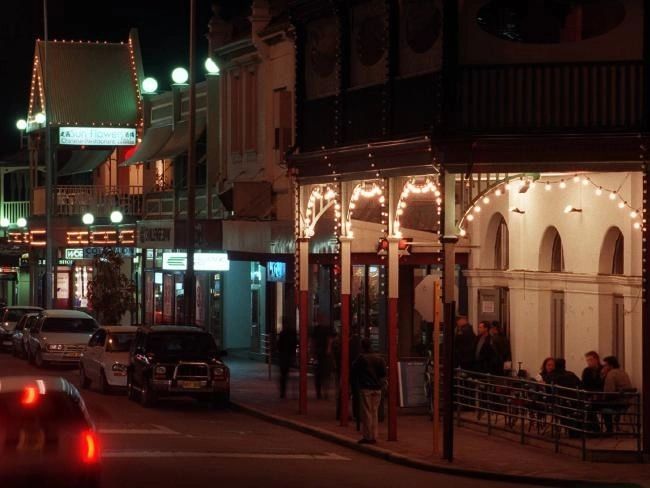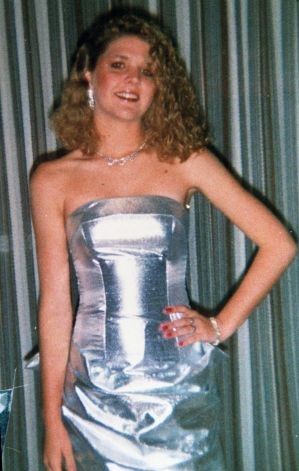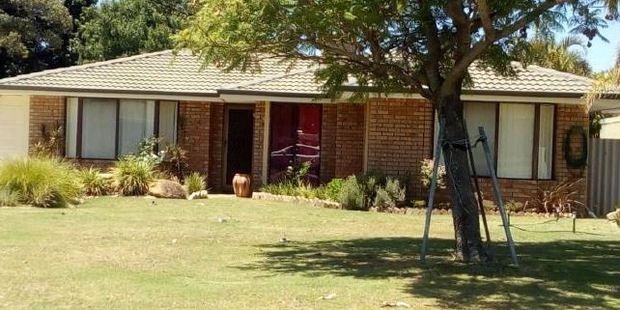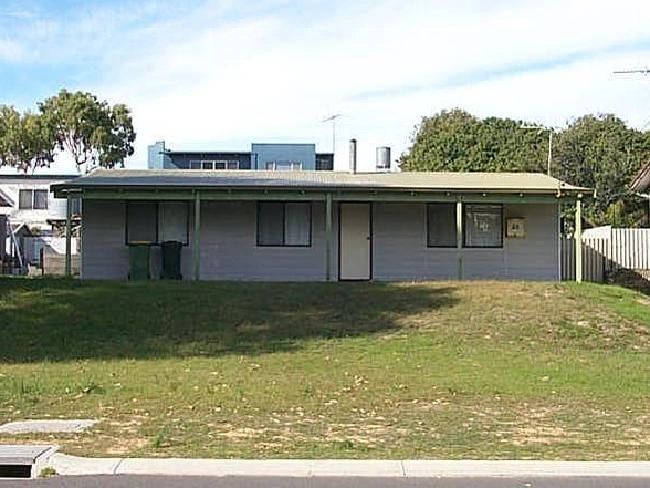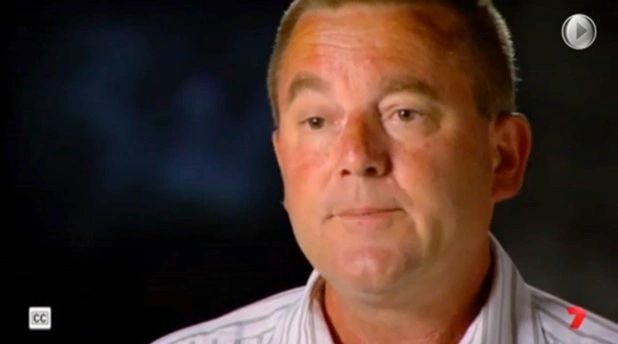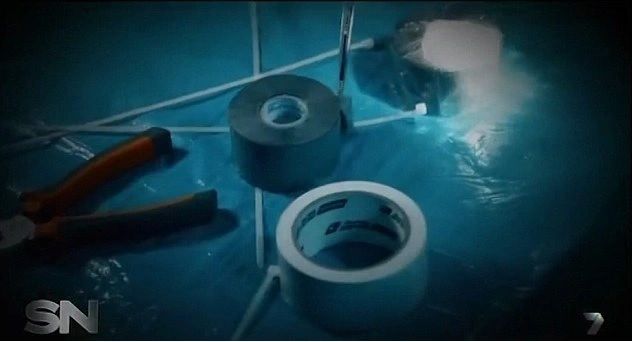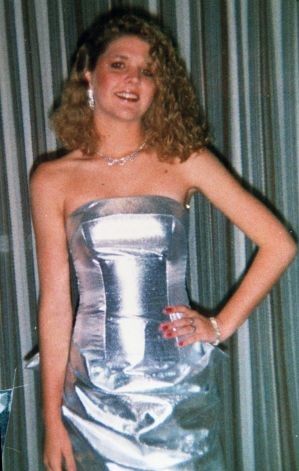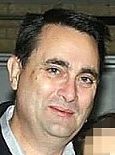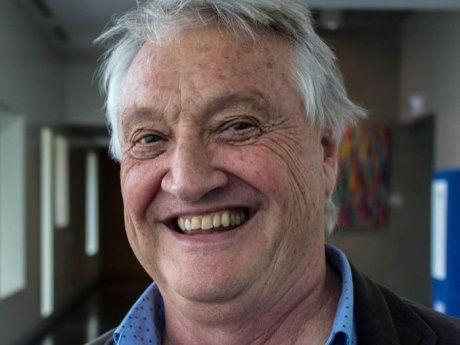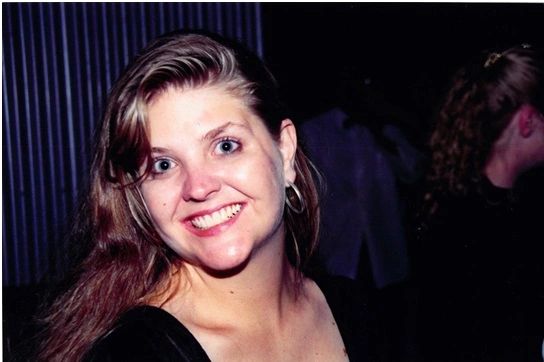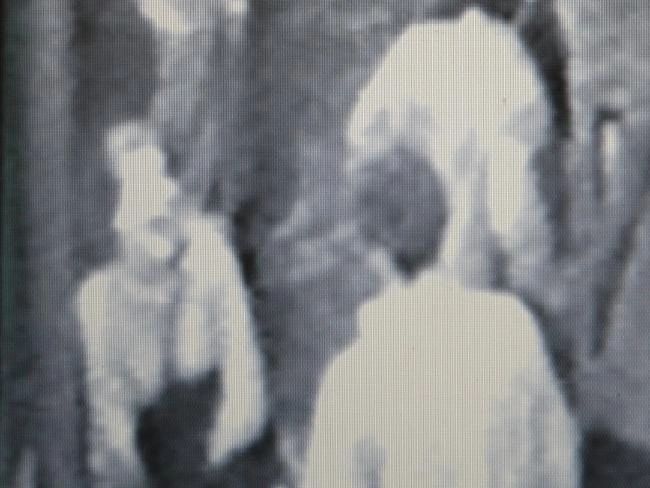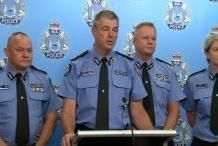The Murder of Western Australian Commander Don Hancock

By David Royds, National Centre for Forensic Studies, University of Canberra
From the December 2013 issue of the APJ.
http://www.abc.net.au/4corners/content/2009/s2651619.htm
This was an outstanding forensic investigation that showcases the work of highly regarded forensic professionals who painstakingly carried out a world class investigation. Most forensic investigations assist in either identifiying offenders or at the very least assist in convicting them. This investigation however did neither of that. The murderers of Lou Lewis and Don Hancock were charged with murder and associated offences by detectives who identified them through outstanding police work. The forensic evidence assisted investigators to demontrate to the offenders that police had recovered large amounts of critical intelligence. This went to obtaining a confession from the offender Sid Reid and to convince a cooffender that the case against them was strong and professional.
Abstract
Bombings in Australia are rare as are crime experts with experience in bomb crime scene examination. It is important to review cases; not only for posterity but to reflect on some of the hard-earned experiences of others so that good work is remembered and emulated in the event of a recurrence. This article is a review of the forensic work carried out by a team of bomb scene examiners from Western Australia (WA) Police led by Sergeant Clayton (Jack) Bennie into the homicides of WA Police Commander Donald Hancock and Mr Lou Lewis. Although Senior Sergeant Bennie had no formal training as a scientist, he applied “scientific methodology” in the search for better understanding of explosive effects of the bomb used to murder Don Hancock and Lou Louise. David Royds has written this article as a training aid for aspiring bomb scene examiners.
Background
Don Hancock was a retired police officer who had served most of his career as a detective. He and his friend Lawrence ‘Lou’ Lewis, a bookmaker, were killed by a bomb that had been planted in their vehicle was detonated as it approached Hancock’s home at 6.36pm on Saturday 1 September 2001.
Hancock, who had risen through the ranks to become the chief of the Criminal Investigation Branch,was also to become one of the state's most controversial police officers.He was best known for the investigation in 1983 of $650,000 worth of gold in the so-called “Perth Mint swindle” which resulted in the gaoling the Mickelberg brothers. They maintained they had been framed. Hancock was also active in the pursuit of Outlaw Motor Cycle Gang (OMCG) members, running a public campaign against them. An incident occurred in the small mining town of Ora Banda, near Kalgoorlie, where a member of the Gypsy Jokers OMCG, Billy Grierson, was shot dead by a sniper. The finger of suspicion was pointed at Hancock however there was no evidence to support a charge. Hancock’s subsequent death was widely seen as an act of revenge by bikies and the death of Lou Lewis as “collateral damage”.
The police investigation, known as Operation Zircon, had a breakthrough when a gang member called Sidney Reid implicated another member, the gang’s sergeant-at-arms Graeme Slater, as the bomber. Reid admitted receiving the bomb from Slater and planting it under the front seat of Lewis’s car whilst it was parked outside Perth’s Belmont Park racecourse. In company with Slater, he followed the vehicle to Hancock’s home and, as it pulled up, he alleges that Slater dialled a number on his mobile phone and whispered “Rest in Peace, Billy” before the bomb went off.
Reid was jailed for life with a minimum of 15 years after pleading guilty to his part in the murders. He would also became the key witness at Slater's trial in the WA Supreme Court. The prosecution of Slater, however, subsequently failed after a vigorous assault upon Reid’s character and reliability as a truthful witness. Whilst controversy and various conspiracy theories persist, the forensic investigation was thorough and detailed. It uncovered strong factual evidence that stands uncontested to this day ...
TRANSCRIPT
Program Transcript
Read the Program Transcript of Quentin McDermott's report "The Hanging Law", first broadcast 10 August 2009.
Reporter: Quentin McDermott
Date: 10/08/2009
(Excerpt of footage of Sydney Olympics closing ceremony)
QUENTIN MCDERMOTT, REPORTER: On the night of October the first, 2000 the world's eyes turned to Sydney, as the closing ceremony of the Olympic Games burst into life. Around Australia, millions of men, women and children watched enthralled as the fireworks erupted over Olympic Park, and a river of light flowed from Homebush to Sydney Harbour.
(End of Excerpt)
QUENTIN MCDERMOTT: But on the other side of the continent, in a remote corner of Western Australia, a much deadlier drama was unfolding. As a small group of men sat by a camp fire, a rifle shot rang out - and one of the men slumped forward, fatally wounded.
With the shooting began a chain of events that would lead to the assassination of a former chief of detectives, and an all-out war between the cops and the Gypsy Jokers.
QUENTIN MCDERMOTT (to Graeme Slater): Do you condemn the murderer of Don Hancock?
GRAEME SLATER, GYPSY JOKERS SERGEANT-AT-ARMS: No.
QUENTIN MCDERMOTT: It's a war that the law-enforcement authorities insist they are winning. But it's also a war that their critics say, has led to failures in the administration of justice, and the wrongful conviction of a man for murder.
ROBERT NAPPER, FORENSIC INVESTIGATIONS: The blinkers go on and then there is just this one way traffic to secure a conviction against the person they say is responsible for the crime.
AVON LOVELL, AUTHOR: European justice stops at the rabbit proof fence. Australian justice stops at the rabbit proof fence. And you come over here and you're in the Wild West. We have different law out here. We have the hanging law.
QUENTIN MCDERMOTT: Tonight on Four Corners, the cops, the bikies, and The Hanging Law.
(On Screen Text: The Hanging Law, reporter: Quentin McDermott)
QUENTIN MCDERMOTT: Seventy kilometres northwest of the mining town of Kalgoorlie, Western Australia, lies the tiny settlement of Ora Banda, dominated by the Ora Banda Historical Inn. Gold prospectors come here to camp and fossick for gold around the outskirts of town.
(Excerpt of footage of pieces of gold)
Inn keeper: Now there's some magnificent pieces.
AVON LOVELL: And that's really quite heavy. This sort of stuff has driven people crazy, and you know, it's just a heavy bit of yellow stuff.
(End of Excerpt)
QUENTIN MCDERMOTT: Author Avon Lovell knows more than most about the value Western Australians place on gold. His ground-breaking book The Mickelberg Stitch detailed the way in which three brothers were falsely accused of swindling the Perth Mint out of 49 gold bars.
The detective who stitched them up for the crime was the one-time owner of this pub - the former Head of the CIB, Don Hancock.
QUENTIN MCDERMOTT (to Avon Lovell): In the pantheon of corrupt Australian cops, how corrupt was Don Hancock?
AVON LOVELL: He was the best. He never got caught.
QUENTIN MCDERMOTT: In retirement, Hancock became a gold prospector.
AVON LOVELL: He had his local gold mine, his own gold mine, just down the road at Grants Patch called the Wentworth, and he owned the pub and the general store behind that, so pretty much he was the mayor of Ora Banda.
QUENTIN MCDERMOTT: But all that turned sour for Don Hancock when one day, a band of Gypsy Jokers rode into town and set up camp. It was October the first, 2000.
As the bikies drank in his pub and watched the Olympics closing ceremony, tempers frayed. Hancock thought one of the bikies had insulted his daughter Alison, who was working behind the bar. He told them to leave.
COLIN LOVITT QC, GRAEME SLATER'S BARRISTER: There was Hancock stomping around the hotel furious about it and his wife telling people that she was worried that Don might go and get a gun.
QUENTIN MCDERMOTT: Forty-five minutes later, as the bikies sat around their camp fire, drinking, a shot rang out, narrowly missing them and fizzing into the flames of the fire. Soon afterwards, a second shot rang out, and the bikie Billy Grierson fell forward, fatally hit.
GRAEME SLATER: The second bullet came through, into his back and come out his chest. I was sitting beside him, I had my arm around him, yeah and it was a pretty sad time.
(Excerpt of footage of Quentin McDermott and Graeme Slater in his home)
GRAEME SLATER: This is where I live, this is where I do all my thinking, and all my business.
(End of Excerpt)
QUENTIN MCDERMOTT: Graeme Slater was one of the bikies who rode into Ora Banda that day. "Slim" Slater, as he is known, is the Gypsy Jokers' Sergeant at Arms.
(Excerpt continued)
QUENTIN MCDERMOTT: Graeme where did you get that poster from?
GRAEME SLATER: The one up there of Bill, that come out the day after Billy was killed.
(End of Excerpt)
QUENTIN MCDERMOTT: Like all club members, he maintains a strict code of silence by refusing to speak to the police or media. Tonight is the first time he has agreed to be interviewed.
QUENTIN MCDERMOTT (to Graeme Slater): Did you know that Don Hancock owned the pub?
GRAEME SLATER: Never heard of the man until that night.
QUENTIN MCDERMOTT: Immediately after the shooting, Don Hancock was accosted, angrily, by one of the bikies, Sid "Snot" Reid.
AVON LOVELL: Reid says, "we know you did it, you bastard", and Hancock gives the only reply that would, would have to number as the worst reply in the world, "well youse'll, youse'll have to prove it, wontcha." I mean, a no would have sufficed and he threw it right back as a challenge.
(Excerpt of footage of Billy Grierson's funeral)
(End of Excerpt)
QUENTIN MCDERMOTT: As Billy Grierson was buried, notices were posted in a local newspaper, threatening Don Hancock.
(On Screen Graphic: Sid Reid's notice in the newspaper)
Sid Reid's carried the clearest warning - "You were taken from us by a cowardly dog. But remember buddy, every dog has its day."
Hancock was never charged - and the police failure to do so helped fan the flames of the bikies' desire for revenge.
COLIN LOVITT QC: They showed a marked reluctance to find out who did it because I think the answer was staring them in the face. And anybody who is really honest will ah, acknowledge that.
QUENTIN MCDERMOTT: What is the answer?
COLIN LOVITT QC: Well that ah, it was Don Hancock who, who killed Grierson.
QUENTIN MCDERMOTT: In the weeks that followed Billy Grierson's death, Hancock's pub and home in Ora Banda were wrecked by bombs. And eleven months to the day after the shooting, the bikies' desire for revenge was finally satisfied.
(Excerpt of footage of blown up car)
On their way home from the races, Don Hancock and his friend Lou Lewis were blown up and killed when their car exploded in front of Hancock's home in Perth.
(End of Excerpt)
TIM ATHERTON, FMR. ASSISTANT COMISSIONER, WA POLICE: It was described at the time as an act of urban terrorism and I think that's probably pretty close to the mark. The killing of a very senior retired officer had a, sent a shockwave through the police service.
(On Screen Graphic: Newspaper headlines following car bombing)
QUENTIN MCDERMOTT: The car bombing stunned Western Australia, and helped turn the entire state against the bikies, who were seen as the perpetrators of this terrible crime. Eight years on, Graeme Slater, who was later charged with the murders but acquitted, shows little sorrow for what occurred that day.
QUENTIN MCDERMOTT (to Graeme Slater): Do you condemn the murderer of Don Hancock?
GRAEME SLATER: No.
QUENTIN MCDERMOTT: Do you condemn the murderer of Lou Lewis?
GRAEME SLATER: Yeah ah, that was sad, but um in a way oh even Hancock killed himself by company, keeping company hey. If I had a bikie club after me there's no way in the world you'd see me with my friends or family, last place you'd find me.
(Excerpt of footage of police raid on Gypsy Jokers' headquarters)
QUENTIN MCDERMOTT: As a special police taskforce swung into action, phones were tapped, and raids were carried out. Operation Zircon was underway.
(End of Excerpt)
TIM ATHERTON: We were aware that there was a plot running, so there were a lot of things that were immediately initiated following the bombing. A lot of activity targeting members of that gang to search for explosives, and any connection with the bombing.
QUENTIN MCDERMOTT: Three men in particular were in the detectives' sights - Les Hoddy, a founder member of the Gypsy Jokers, Sid Reid, and Graeme Slater. The police believed the three men were involved in the plot to kill Don Hancock.
GRAEME SLATER: Everyone, everyone was a suspect. They had, everyone was under surveillance, the whole club members and associates. Reid was the number one because apparently they saw him back there at the murder scene that night, at a service station close by to the bombing, in Lathlain. So he was the number one suspect and they went for him because they thought he was the weak link and they kept at him, kept at him until they rolled him over.
(Excerpt of footage of Sid Reid entering court)
SID REID (to the media): You f***ing maggot, get a good picture?
(End of Excerpt)
QUENTIN MCDERMOTT: Sid Reid was a drug addict, it would prove to be his undoing.
GRAEME SLATER: He was actually thrown out of the club because he was caught by another member using a needle which is, which is taboo in our club. Um, and um, that was instant dismissal that was. I'd go around there and take his colours and dish him up some punishment that was my job, which I did regretfully and um that was the end of him. He was finished. He's um his membership was terminated.
QUENTIN MCDERMOTT: When was this?
GRAEME SLATER: Two days before he got arrested for the murders.
QUENTIN MCDERMOTT: So did that provide a motive do you think for him to roll over?
GRAEME SLATER: That's when the police seized their opportunity, while he was gullible and vulnerable.
COLIN LOVITT QC: They became convinced that Slater was the general and that Sid Reid was the lieutenant. And they started buttering up to Sid Reid, and then ultimately there came a time where they arrested him, put pressure on him in various ways, some of which out of their own mouths was quite improper pressure.
QUENTIN MCDERMOTT: Give me an example of that.
COLIN LOVITT QC: Well they told him that ah, his DNA had been found at the crime scene, which was totally fictitious.
QUENTIN MCDERMOTT (to Graeme Slater): Sid Reid he broke the bikie code of conduct, he's a dead man walking?
GRAEME SLATER: That's what the media said.
QUENTIN MCDERMOTT: Is it true?
GRAEME SLATER: I hope so, one day and then again I don't care where he is mate he can rot in hell. That's where he belongs. He um, he did break the code of silence, he broke the bikie code, he did everything you know, everything he done was wrong, you know. He got in bed with the coppers and he can lay with them, as simple as that.
QUENTIN MCDERMOTT: Sid Reid was now the detectives' supergrass. He admitted he had planted the bomb that killed Don Hancock, but agreed to testify that Graeme Slater had primed and detonated it. In return, he was told, he could expect parole after 15 to 19 years - far less than the 30 years he might otherwise have got for a crime of this magnitude.
TIM ATHERTON: He could've been serving 20 plus, maybe even more given the gravity of the incident.
QUENTIN MCDERMOTT: But Sid Reid saw scope to reduce his sentence even further. Out of the blue, he told the detectives from Operation Zircon that he had witnessed another murder. He claimed Gary White, a former friend who was close to the Gypsy Jokers, had shot another man dead. A man called Anthony Tapley.
QUENTIN MCDERMOTT (to Stephen Shireffs): Is there anything significant do you think in the timing of alleged revelation that Gary White had murdered Anthony Tapley?
STEPHEN SHIREFFS, GARY WHITE'S BARRISTER: Well (laughs) it was only revealed after he was offered the olive branch by those at Zircon to come forward and co-operate and provide as much, much information as you can which will lead to a reduction in your sentence. One followed the other.
QUENTIN MCDERMOTT: David Caporn, the officer heading Operation Zircon, asked Tim Atherton, then an Assistant Commissioner, to sign a letter of comfort to the Judge acknowledging Sid Reid's help in solving the mystery of what happened to Anthony Tapley.
TIM ATHERTON: Letters of comfort aren't easily granted. The way the judge deals with it is up to him, but it's certainly a letter suggesting that this person has been extremely co-operative and, and his, his information or evidence, information in this case, has been crucial to the resolution of an investigation and that was the impression that I was given in terms of the briefing that Caporn gave me.
QUENTIN MCDERMOTT: Sid Reid was duly rewarded for his cooperation. In March 2002, he pleaded guilty to the murders of Don Hancock, and Lou Lewis, and was sentenced to life imprisonment - but with a recommended minimum term of just 15 years.
COLIN LOVITT QC: Whilst it's one thing to deal with Sid, the Sid Reids of this world and um you know, shall we say cosy up to them when you want something from them, it's another thing to delude yourself that he's you know, ah Father Christmas.
QUENTIN MCDERMOTT: But the detectives believed that all their Christmases had come at once. Gary White was arrested and charged the next day with the murder of Anthony Tapley. According to White, Zircon's detectives offered to fly him to Ireland to start a new life if he would tell them everything he knew about Graeme Slater and the Gypsy Jokers.
GRAEME SLATER: They pursued him in the off chance the hope that he would roll over like Sid Reid and um because they couldn't really rely on one liar to try and get a successful conviction on me, so they needed two and um, he wasn't prepared to do that at all.
QUENTIN MCDERMOTT: What deal did they offer Gary White?
GRAEME SLATER: Well they said to him in no uncertain words that we um, they wouldn't charge him for the murder, um because they reckoned Anthony Tapley was a nobody.
QUENTIN MCDERMOTT: White paid the price for his refusal to roll over. When he came to trial for Ant Tapley 's murder, he denied the charge but was found guilty and sentenced to life imprisonment with a non-parole period of 22 years.
Gary White has a chequered past, which includes convictions for assault and possession of offensive weapons. In Perth he went into the trucking business with the late Les Hoddy - a senior Gypsy Joker. But he denies being a bikie associate.
TERRY BAUSCH, FRIEND: Gary can scrap, Gary can stand up for himself but Gary's not a killer. He's far from it. He, he'd almost flog you to death if he had to, but he wouldn't kill you. There's no way. There's no way.
QUENTIN MCDERMOTT (to Graeme Slater): You've never known him to be a violent bloke?
GRAEME SLATER: No, not really no. I've never seen him in a fight no. He's a stand up bloke, he's um staunch and that, but um, no he's not, he's not a killer instinct in him no not at all.
QUENTIN MCDERMOTT: But the killer instinct is just what Sid Reid accused Gary White of having.
(Excerpt of footage of Quentin McDermott at the scene of alleged murder of Anthony Tapley)
QUENTIN MCDERMOTT: Behind me is number 12 Jade Street Maddington, where Sid Reid says that on a pitch-black night like this, Gary White murdered Anthony Tapley by chasing him round the yard and shooting him six times.
No one else who was here that night says they saw the shooting, or heard it. When the yard was dug up for clues, and the gates were taken away, the forensic evidence that resulted was at best, highly controversial.
QUENTIN MCDERMOTT (to Susie Miller): Tell me what happened that evening?
SUSIE MILLER, FRIEND: Oh Ant came over and um I think we'd been at the hotel, we'd actually had some drugs and we thought we'd go over to Whitey's place and keep on drinking and have a bit of a party, the girls were over there cooking up a roast, and ah so, we just ah decided to go over.
QUENTIN MCDERMOTT: Four Corners has spoken to two of Gary White's friends who say they were there at the time of the alleged shooting - but deny it happened. Gary White's former girlfriend Julie Sparkes chose not to give evidence at his trial.
JULIE SPARKES, FORMER PARTNER: 'Cause I was three months pregnant at the time and I told the police I wasn't there 'cause I didn't want stress on the baby and I knew he didn't do it.
(On Screen Text: Reconstruction, Julie Sparkes' account)
QUENTIN MCDERMOTT: She now says that on the night in question, she and White were having dinner out, when White received a phone call telling him that his friends were at Jade Street, cooking up a roast. Angered by this, he got in the car and went back.
JULIE SPARKES: Gary got out of the car and stormed inside. I followed him, he was really angry cause I'd spent all day cleaning it and it was just disgusting. They had no respect. So he told all the women to leave and they all left.
QUENTIN MCDERMOTT: According to Julie Sparkes, the men stayed. They included Sid Reid, Ant Tapley and another resident at Jade Street, Dennis Jardin - who had a room overlooking the yard. Julie Sparkes' recollection - which has never been tested in court - is that Tapley left Jade Street that night with Sid Reid.
JULIE SPARKES: I came to take some rubbish out and I seen Sid and Anthony walking out the gate together and there was a blue Ford I think it was, and they both got into the car.
(Excerpt of footage of Quentin McDermott and Dennis Jardin at Jade Street)
QUENTIN MCDERMOTT (to Dennis Jardin): So Dennis, this is number 12 Jade Street where you lived.
(End of Excerpt)
QUENTIN MCDERMOTT: Dennis Jardin stayed at Jade Street all night.
(Excerpt continued)
DENNIS JARDIN, FRIEND: Yeah that's right.
QUENTIN MCDERMOTT: Just show me where you lived.
DENNIS JARDIN: See that window, over this side of that frame, that was my room there.
(End of Excerpt)
QUENTIN MCDERMOTT (to Dennis Jardin): did you at any point during the night hear gunshots?
DENNIS JARDIN: No.
QUENTIN MCDERMOTT: Would you have heard them if they'd gone off in the yard?
DENNIS JARDIN: Of course I would've, most definitely.
QUENTIN MCDERMOTT: Jardin was never called to give evidence at Gary White's trial, where Reid had accused him of being involved with the murder.
QUENTIN MCDERMOTT (to Dennis Jardin): You'd locked the gate and you were outside when Gary White approached Anthony Tapley holding a gun, is that true?
DENNIS JARDIN: No, no.
QUENTIN MCDERMOTT: It simply didn't happen?
DENNIS JARDIN: No.
QUENTIN MCDERMOTT: He also says that the next morning when he came back to the yard, he saw you raking up the ground where Anthony Tapley's body had fallen.
DENNIS JARDIN: No.
QUENTIN MCDERMOTT: Is that true?
DENNIS JARDIN: No, nup, definitely not because the next morning I'd have been at work.
QUENTIN MCDERMOTT: The prosecution at Gary White's trial said that after the shooting, White took Tapley's body to a farm at Northam - an hour and a half's drive away - and burned it on a bonfire. Farmer Wayne Morgan insists he saw Gary White here with two other men between 7.30 and 8am on August the 20th - the morning after the alleged murder.
QUENTIN MCDERMOTT (to Wayne Morgan): How big was the fire?
WAYNE MORGAN, NORTHAM FARMER: Ten by 10 foot in diameter yeah.
QUENTIN MCDERMOTT: How long had it been burning do you think?
WAYNE MORGAN: Oh probably all night, it had, it had burnt down. They were just, when I turned up, ah Les was throwing the burnt out pales of logs and sticks back into the fire.
QUENTIN MCDERMOTT: Did you smell anything unusual?
WAYNE MORGAN: I didn't smell anything no.
QUENTIN MCDERMOTT: So you didn't smell burning flesh?
WAYNE MORGAN: No.
QUENTIN MCDERMOTT: Did you see anything that could conceivably have been a body on the fire?
WAYNE MORGAN: No, no I didn't go near it. No I didn't see anything like that at all no.
(On Screen Text: Reconstruction, Wayne Morgan's account)
QUENTIN MCDERMOTT: The prosecution argued that Wayne Morgan's account fitted with Sid Reid's claims. But White denied being at the farm that day.
There is now fresh evidence that challenges Wayne Morgan's recollection. Sue Miller, who spent the night at Jade Street, clearly recalls seeing Gary White there the following morning.
QUENTIN MCDERMOTT (to Susie Miller): What time did you leave the next morning?
SUSIE MILLER: Ah about five, five-ish.
QUENTIN MCDERMOTT: Was Gary White still there?
SUSIE MILLER: Yeah I'm sure he was, yeah he was.
QUENTIN MCDERMOTT: How can you be so sure?
SUSIE MILLER: 'Cause I think he came into the room and um said it's time to go to work, or whatever he said, well I really don't know what he said now 'cause I can't remember, but I'm 100 per cent sure he was still there.
QUENTIN MCDERMOTT: If true, this means that Gary White couldn't have been at Northam all night, but Sue Miller's evidence that White was at Jade Street on the morning of the 20th was never explored at trial, because she was never asked the question.
(On Screen Text: Reconstruction, Sid Reid's account)
QUENTIN MCDERMOTT: Reid said White had shot Tapley as he scaled the gate, in a desperate effort to escape. To bolster his claims against White, the prosecution needed forensic evidence. Police took the gate away for forensic analysis, and scientists analysed a stain, which it was suggested, may have been Tapley's blood, and contained his DNA.
Charred bones were found in the remains of the fire at Northam, and these too were analysed.
GARY MASSEY, GARY WHITE'S SOLICITOR: These things were so important that the prosecutor at the trial described them as the "touchstones to the truth" when dealing with Reid's evidence, so they were very significant.
QUENTIN MCDERMOTT: But tonight Four Corners can reveal that crucial evidence from the forensic tests was not considered at the trial. Gary White's legal team has hired two highly experienced forensic scientists, Brian McDonald and Barry Boettcher, to review the evidence. Their conclusions are unequivocal.
BRIAN MCDONALD, CONSULTANT MOLECULAR GENETICIST: There is very little of it, I think, is sound in terms of being able to be used in any way to identify the source of the DNA on either the bones or, or the possible blood on the gate.
BARRY BOETTCHER, PROF. UNIVERSITY OF NEWCASTLE: My opinion is the best interpretation is that that stain on the bottom of the gate was not blood at all. What it was, I have no idea.
QUENTIN MCDERMOTT: When the scientists working with the police screened the stain on the gate for blood, the results were mixed. One test, they said, had given a positive reaction - but the follow-up test couldn't confirm it was blood.
BARRY BOETTCHER, PROF: The initial screening tests are very sensitive, and in this particular case, the initial screening test was negative and for me that said this is not an old, this is not a bloodstain, it's not even an old bloodstain, because old blood will give a reaction in this. And that's where it should have stopped, there should have been no further tests.
QUENTIN MCDERMOTT: The scientists also tested the stain for DNA, and reported finding a partial DNA profile. The jury was told there was a one in 60 chance that it belonged to anyone other than Anthony Tapley.
But the jury wasn't told that the sample was tested five times to achieve this result - and crucially, that one reading indicated a mixture of DNA coming from more than one person.
BRIAN MCDONALD: There is clear evidence that there's more than one individual contributing to the sample so the one in 60 figure becomes largely meaningless. What we've got is an extremely weak DNA result that shows very poorly reproducible results from the numbers of times that it was tested and a selective approach has been taken to those variable results and reported.
QUENTIN MCDERMOTT: PathWest's scientists are standing by their report. In a written statement, the prosecution's principal scientist denied that a mixture of DNA from more than one person was found.
QUENTIN MCDERMOTT (to Brian McDonald): In your view was the stain on the gate Anthony Tapley's blood?
BRIAN MCDONALD: Based on the evidence that I've seen, no I don't think any conclusion could be drawn about it being anybody's blood or DNA.
QUENTIN MCDERMOTT: The fragments of bone which were found at Northam were also examined for traces of DNA by the Forensic Science Service in the UK. The suggestion at Gary White's trial was that the bones could have been Tapley's. But Brian McDonald says that in fact the testing revealed DNA that was not Tapley's.
QUENTIN MCDERMOTT (to Brian McDonald): In your view, were the bones found in the remains of the bonfire Anthony Tapley's bones?
BRIAN MCDONALD: Again, I don't think you can say whose bones they are. The only evidence that they have say that they're not.
QUENTIN MCDERMOTT: The jury wasn't told this.
ROBERT COCK QC, FMR. DIRECTOR OF PUBLIC PROSECUTIONS WA: With the benefit of hindsight it would've better if we'd disclosed everything right from the start.
QUENTIN MCDERMOTT: And that would've included the full forensic file?
ROBERT COCK QC: Absolutely, if, well I assume we would've disclosed everything we had, ah whether that was everything that the pathologist had is a different question, and they don't always give us their file and they may not have on this occasion.
QUENTIN MCDERMOTT: Maybe they should?
ROBERT COCK QC: Well I think it's highly desirable that we access everything that's produced.
QUENTIN MCDERMOTT: One potentially decisive test that the UK lab could have carried out, was to compare mitochondrial DNA extracted from the samples with mitochondrial DNA donated by Anthony Tapley's mother Elizabeth.
Brian McDonald, who has reviewed the forensic file in detail, says this comparison was never carried out.
BRIAN MCDONALD: Mr Tapley's mother gave a sample of her mitochondrial DNA to be compared. The laboratory apparently did not test that sample to compare it with the bone.
QUENTIN MCDERMOTT: Well should they have done that?
BRIAN MCDONALD: Well of course they should've. I mean that was the fundamental reason for sending it to the UK.
QUENTIN MCDERMOTT (to Robert Cock): Why did the prosecution fail to ask for comparative mitochondrial DNA tests to be carried out which could've excluded the bones as being Tapley's?
ROBERT COCK QC: I thought that's what we were sending them to the UK for myself, so I understood the purpose of sending those bones to the United Kingdom was that local labs had no capacity to do any of that analysis, and we sought the assistance of the UK because their facilities are better.
QUENTIN MCDERMOTT (to Brian McDonald): How would you describe the UK laboratory's failure to make that comparison?
BRIAN MCDONALD: Incredulous. I, I, we asked the question, why um they didn't do it and the explanation was that they only tested if they get comparable results with the crime scene sample. Well they got a result from the crime scene sample, the bone, they put it through the database, they found that it matched 25 per cent of the population, buy they didn't compare it with the very sample that was sent there to compare with. Amazing.
QUENTIN MCDERMOTT: Anthony Tapley's body has never been found. No witnesses - other than Sid Reid - say that Tapley was shot dead by Gary White. No gun has ever been found, nor have any bullets.
Two scientists now agree that the stain on the gate wasn't blood and the bones from the fire weren't Tapley's. And there's another twist to this story - Anthony Tapley may have been alive when Sid Reid says he was dead.
Pamela Yates and her sister Paula Bawden, who live in Karratha, in northern WA, last saw Ant Tapley in August 2001.
PAMELA YATES, FRIEND OF ANTHONY TAPLEY: The last night I saw him, he um, he came to my place, he was terrified people were after him. Apparently a week prior to that or around about two weeks um, he told me while he was up in Hedland he was taken out bush by four Indigenous people and they tied him up to a tree, stripped him tied him to a tree, taunted him, held a gun to his head and apparently a phone call came through and one of the people with the phone turned around and said to Ant "this is your lucky night", so they undid him and took off and left him to find his own way back.
QUENTIN MCDERMOTT: So he must have been very, very scared?
PAMELA YATES: Yes he was. He was terrified, he was on the run.
QUENTIN MCDERMOTT: Gary White's trial was told that White had killed Anthony Tapley over a $100 drug debt. But Tapley himself had told his father that the men who tied him to a tree and beat him up were after a far larger sum.
DAVE TAPLEY, FATHER: There was an issue of some money went missing and they accused him of taking it.
QUENTIN MCDERMOTT: How much money was involved?
DAVE TAPLEY: $70,000.
QUENTIN MCDERMOTT: Anthony Tapley had fallen on hard times. He had wandered into the world of drugs, bikies and their associates, living at times in the north, around Karratha and Port Hedland, and at times in the south, between Perth and the family home in Walpole. His father Dave Tapley became concerned. Some months later he received a horrifying phone call.
QUENTIN MCDERMOTT (to Dave Tapley): Just tell me what occurred.
DAVE TAPLEY: A lady rang up and she was crying on the phone and she said "Dave I've got some terrible news", and she said, I said "what's that?" and she said "oh I've been told Anthony's been murdered". And ah she wouldn't go into graphics. I pumped her into it and she told me he'd been decapitated. And I, you know I mean that was, I never, I never told my wife because to me it wasn't confirmation and I didn't want to take her through that for nothing.
(On Screen Graphic of Missing Persons file)
QUENTIN MCDERMOTT: In November 2001, Dave Tapley reported Ant's disappearance to the police. Inquiries were made by the Missing Person Bureau.
Four Corners has obtained a copy of the Missing Person file, which shows that the police had information that Tapley was still alive on the 26th of August - one week after Sid Reid said he was dead and confirms that the police had identified three known criminals as his possible assailants.
The file has been studied by Robin Napper, a former Detective Superintendent and an acknowledged expert in forensic policing. He is highly critical of the haste with which David Caporn - the head of Operation Zircon - apparently dismissed the evidence in the file.
ROBERT NAPPER: Because Anthony Tapley had had a fearful beating just before he went missing, he'd been chained to a tree, he'd been hit and with, with planks with nails in, he'd been threatened with a gun, he was man in a huge fear of his own life, now to dismiss all that in 24 hours, simply not possible.
QUENTIN MCDERMOTT: Tim Atherton says Superintendent Caporn didn't tell him that Ant Tapley had been reported alive after Sid Reid said he'd been killed.
TIM ATHERTON: Well my understanding now is that there were some matters in relation to witnesses who knew Tapley that suggest that, that he may have been seen in the Karratha area on a date some week or so after the alleged incident at Maddington.
QUENTIN MCDERMOTT: If you'd been told that by David Caporn at the time, would you have signed the letter of comfort?
TIM ATHERTON: No of course I wouldn't have. No if um, if there were still unresolved issues in relation to Tapley's whereabouts, um I would've insisted on those, those matters being run out to determine either whether they were accurate, um mistaken or confirmed and only when I was satisfied that the only explanation for Tapley's disappearance was as Reid had suggested, because he'd been murdered at this address in Maddington, and that had been confirmed, would I have been happy to sign a letter of comfort.
QUENTIN MCDERMOTT: Reid's allegations had certainly not been confirmed. The missing persons file shows that Pamela Yates had told the police that she last saw Ant Tapley alive on the 25th of August. Her sister Paula said she'd spoken to Tapley the next day.
At Gary White's trial, after being interviewed by officers seeking to corroborate Sid Reid's story, Pamela Yates and some other witnesses were less certain about their dates, than when they first gave statements.
But the question remains - was their earlier recollection more accurate? Was Ant Tapley alive after Sid Reid says he was killed?
ROBERT COCK QC: There are several people who say Mr. Tapley was alive then and after, but, and the jury heard those other witnesses and formed the view they must have been mistaken.
QUENTIN MCDERMOTT: So Sid Reid was right and all those other witnesses who said he was alive after the 19th of August were simply wrong?
ROBERT COCK QC: That's obviously the outcome of the trial, yes.
QUENTIN MCDERMOTT: But there was other evidence from the missing persons file which was not put before the jury at Gary White's trial. Detectives from the Missing Person Bureau had spoken to a truck driver called Kent Ginn who told them he had given Tapley a lift from Dampier to Karratha around the 24th of August.
QUENTIN MCDERMOTT (to Robin Napper): Should Kent Ginn have been called to give evidence at Gary White's trial?
ROBERT NAPPER: Absolutely, crucial witness, if he was indicating to the Missing Person Bureau that he felt the date that he brought Anthony Tapley down was the 24th of August, well clearly someone's got this wrong. The Crown case is that Anthony Tapley was dead on the 19th, so that needed to be resolved.
QUENTIN MCDERMOTT (to Robin Cock): Why wasn't Kent Ginn called to give evidence at the trial?
ROBERT COCK QC: Yeah he was the truck driver I think who gave evidence from about Port Hedland. Um I've asked again about him and the best of my recollection is that he simply wasn't able to be found at the time of, of the trial.
QUENTIN MCDERMOTT: Four Corners has found Kent Ginn. He wouldn't be interviewed on camera, but he confirms that he gave Ant Tapley a lift - and says he is very clear that it was after the 20th of August, because that is his birthday - and he remembers celebrating it in the Dampier Hotel, before giving Tapley a lift to Karratha. He has also confirmed this to White's solicitor.
GARY MASSEY: I've spoken to Mr Ginn, he tells me his birthday's on the 20th August and he's sure that it happened after his birthday.
QUENTIN MCDERMOTT: So even if he was wrong by a couple of days and it was after his birthday, it must've been after the 19th August?
GARY MASSEY: Absolutely.
QUENTIN MCDERMOTT: When Sid Reid broke the bikie code of silence to give evidence against Gary White, the jury accepted his word. But when Graeme Slater went on trial for the murder of Don Hancock, they did not. Slater's barrister Colin Lovitt zeroed in on the claims made by Reid to the detectives from Operation Zircon.
COLIN LOVITT QC: I spent quite some time with it because it was a devastating litany of lies. And when the foreman announced his verdicts, I've never heard anything like it. He said not guilty each time, almost a denunciation of the prosecution case.
GRAEME SLATER: Actually I knew I had it in the bag because they were, all smiled at me when they come out and even the judge smiled at the verdict, he was happy with it too, yeah and so no more than me though, I was hysterical.
QUENTIN MCDERMOTT: Eight months after their disastrous failure in the trial, prosecutors put Graeme Slater, Gary White, Les Hoddy, and two other men on trial again - this time, for the bombings at Ora Banda. Sid Reid again gave evidence. The verdict again was not guilty.
QUENTIN MCDERMOTT (to Gary Massey): You represented Gary White at that trial.
GARY MASSEY: I did, yes.
QUENTIN MCDERMOTT: What in your view was the strength of the evidence against him?
GARY MASSEY: Wholly dependent upon Reid's credibility and Reid himself in the defence submission to the jury was just a totally unbelievable witness.
QUENTIN MCDERMOTT (to Robert Cock): In the trial of Graham Slater again and again and again in cross examination, he admitted he'd lied about specific events.
ROBERT COCK QC: Um that's right.
QUENTIN MCDERMOTT: So your assertion would be that yes, he lied repeatedly, or he admitted he'd lied repeatedly in two trials, in the Graeme Slater trial and the Ora Banda trial, but he was telling the truth in the Gary White trial?
ROBERT COCK QC: Ah on, on critical issues, yes.
QUENTIN MCDERMOTT: Neither David Caporn nor the Western Australia police would appear on this program. In 2006 Gary White lost an appeal, but armed with this new evidence, his legal team will soon submit an application to the state's Attorney General, inviting him to exercise the Royal Prerogative of Mercy to send his case back to the Court of Appeal.
Another fresh piece of evidence will be this statement, alleging that in late December 2001 - several months before he rolled over - Sid Reid confessed to a friend that he'd killed a man.
(On Screen Graphic of statement)
The friend, whose name is David Hitchcock, says Reid told him "I've chased someone around a yard. I shot him as he ran to the gate. He tried to scale the fence. When he did that I lined him up and shot him in the arse from underneath him. He fell off the fence and I walked up to him and shot him in the head."
GARY MASSEY: The circumstances that he described to Hitchcock were almost identical to the way in which he described Gary White as having murdered Tapley. The only change seems to have been that in that story to Hitchcock, Reid was inserting himself, and we regard that as significant because Reid, you know Reid had told the various trials that you know, one way you can tell a lie is insert yourself into a true story or take someone else out of a true story, insert someone else in. So that's - we regard that as significant for that reason.
QUENTIN MCDERMOTT: There are now four plausible suspects for the murder of Ant Tapley, apart from Gary White. They include the three men identified in the Missing Person File, and Sid Reid himself.
STEPHEN SHIREFFS: I have in my view no doubt that this is a miscarriage of justice and although I can't say whether a person is guilty or not guilty, innocent I should say, that's not the test before the Court. I have no doubt that in this case there is a reasonable doubt as to the guilt of Gary White.
QUENTIN MCDERMOTT (to Tim Atherton): So does Gary White deserve a retrial?
TIM ATHERTON: On the basis of some of the information that I've been privy to, I think there should be serious consideration given to Gary White being given an opportunity to put his case again to a court of law yes.
QUENTIN MCDERMOTT: Dave Tapley believes that Gary White did kill his son - but that the full truth is yet to emerge. Nine years on from the shooting of Billy Grierson and eight years on from the murders of Don Hancock and Lou Lewis, families are still in mourning, and still seeking some kind of closure.
DAVE TAPLEY: We had a memorial service in Walpole. We just had to do something, mate, we couldn't have a funeral, no body, no nothing. The few little bones they've got they had to send to England to be powdered up into paste for trying to get DNA which they couldn't, properly, you know. I made a table, a chair thing to put in the park with a plaque with his name on it, memory plaque, that's all I could do.
QUENTIN MCDERMOTT: Do you feel any sense of closure now?
DAVE TAPLEY: Probably not. It's a silly thing, mate, when I look in the football, I look in the crowd and see people who look like Anthony, you're still always hoping that he's still alive somewhere, you know. I guess you can't call it closure. (Cries)
[End of Transcript]
http://www.theage.com.au/articles/2007/06/22/1182019368179.html
Riding low: the world of Bikie Inc
John Silvester June 23, 2007
THE bikies had every reason to hate Don Hancock. They knew the country publican and former senior Perth detective had shot dead Gypsy Joker member Billy Grierson after a minor dispute in October 2000.
Investigating police were also convinced Hancock was the sniper who had shot Grierson that night in the West Australian goldfields town of Ora Banda. But they never charged him. By the time officers had reached him, Hancock, a former head of the CIB, was showered and changed; he refused to hand over his original clothing, defied instructions to stay at the scene and then ate an orange to remove gunshot residue. He went free.
The Gypsy Jokers vowed revenge. They repeatedly bombed Hancock's pub and home — concealing the explosives before one attack in the coffin of a teenage boy. Hancock — known as the Silver Fox — returned to Perth, where a state of the art security system was set up in his home. It was not enough. The bikies found out he regularly went to the races with an old mate, retired bookie Lou Lewis. When they were leaked the details of the bookie's car by a tame source within the West Australian Transport Department the rest was easy. They walked around the Belmont Park racecourse until they found the unlocked car and placed a bomb under the passenger seat.
As Hancock and Lewis drove home on September 1, 2001, one of the bikies used a mobile phone to trigger the ammonium nitrate bomb. "Rest in peace, Billy," he said. The explosion that killed both men was heard more than eight kilometres away. Don Hancock had been their enemy but Lou Lewis was not. To the bikies he was just collateral damage.
Welcome to the world of outlaw motorcycle gangs, where violence is often the first and only resort.
The shootings in the CBD that this week resulted in the arrest of Hells Angels member Christopher Wayne Hudson graphically exposed what happens when Melbourne's underbelly of guns, drugs and vice collides with the mainstream on a busy city street.
And while the rampage cannot be blamed on the Angels — it appeared to be a squabble gone mad — it raises questions about the bikie culture and the community's response to the ever present threat.
The Australian Crime Commission says there are 17 outlaw motorcycle gangs in Victoria, and 35 throughout Australia, with a total of 3500 fully patched members and perhaps as many again who are associates.
The ACC is investigating bikie groups as established criminal networks, for money laundering and tax fraud, firearms trafficking and drug manufacturing. The commission has found that the "size, profile, geographic spread and level of sophistication of OMCG (outlaw motorcycle gangs) criminal activity presents a significant threat to Australia and its interests".
It says gangs can affect legitimate businesses, "including finance, transport, private security, entertainment, natural resources and construction".
There is nothing subtle about outlaw bikies. While many gangsters try to conceal their underworld connections behind closed penthouse doors, bikies wear their colours to show their criminal spots. It is a strategy designed to forge military-style loyalty between members while simultaneously intimidating outsiders. Some brag they are like a swarm of bees that will attack (and die) to protect the hive.
Bikies have also moved into debt collecting, using their fearsome reputations to stand over parties in civil disputes. They have also been known to wear their gang colours when at auctions — a move designed to intimidate rival bidders.
The outlaw bikie world remains in a constant state of tension, with smaller clubs at risk of violent takeover by the Hells Angels, Bandidos, Rebels, Outlaws, Black Uhlans and Nomads.
Police in Sydney are facing bikie violence as gangs battle to gain control of the lucrative nightclub drug scene. Just this week a bomb exploded outside a Hells Angels clubhouse in Sydney.
Similar battles have broken out on the Gold Coast. Unlike the Melbourne underworld war, in which victims were shot in ambushes, the Finks and Hells Angels went to war in a crowd of 1600 people at a kickboxing event on the Gold Coast.
In Geelong the Rebels' headquarters was fire-bombed in April and the Bandidos' clubhouse was sprayed with bullets. Earlier this month two gunmen shot four Rebels gang members in an Adelaide nightclub.
Police say outlaw gangs in Australia have been pushing their way into nightclub ownership, club security, strippers, entertainment, modelling agencies and prostitution. They have attempted to buy a legal brothel using associates with no criminal records as a front.
In Melbourne, while bikies do not appear to own nightclubs — at least on paper — police intelligence shows gang associates own, run and control security at some venues.
Police say rival bikie gangs are trying to gain control of security at popular venues so they can green-light the distribution of their drugs through sanctioned dealers.
"Control the front door and you control who gets in. Control who gets in and you control the distribution of drugs," one senior policeman told The Age.
In Victoria, bikie headquarters are easily identified and heavily protected. The Special Operations Group has used bulldozers, a ram truck and explosives to gain access.
In Western Australia special anti-fortification laws have been passed to try to stop bikies building domestic forts in Perth. Police in Victoria may soon lobby for similar laws.
In the 1980s an Australian Bureau of Criminal Intelligence investigation into bikies codenamed Wingclipping found the gangs to be a serious organised crime threat.
The problems have only escalated in the past two decades. In Angels of Death: Inside the Bikers Global Crime Empire Canadian experts William Marsden and Julian Sher, say Australia has the highest number of bikies per capita in the world.
Marsden and Sher found that Australian bikies remain locked in a decade-long battle to control the country's slice of the massive amphetamine market that began in the mid-1990s. "Over the next five years, 32 bikies would die and many more would be beaten as the Hells Angels, Bandidos and other clubs fought over the amphetamine trade."
In fact it was in the mid-1970s that the Hells Angels pioneered the trade in Australia — and first established the international nature of Bikie Inc.
PETER John Hill was not an average bikie. The former private school boy and son of a bank executive loved motorbikes and became an original Melbourne Hells Angel.
Hill became friendly with senior Californian Angels, including hitman James Patton "Jim Jim" Brandes. When Hill visited the Oakland Chapter, Brandes took him to prison to meet the gang's amphetamine expert — Kenny "KO" Walton.
Walton told Hill how to make speed and later mailed him a detailed recipe. In return Melbourne Hells Angels organised to smuggle a vital ingredient for amphetamine production to the US gang.
At the time the chemical P2P was difficult to source in the US but remained freely available in Australia. Hill and his team filled three-litre Golden Circle pineapple tins with the chemical and mailed them, two at a time, to the Oakland chapter. After 50 deliveries the Californian gang had sufficient to make $US50 million in speed.
Bob Armstrong was the Victorian policeman who would spend half a career in investigations, surveillance and undercover work that centred on the bikies. His original team smashed the Hells Angels Greenslopes amphetamines lab in 1982, finding three kilograms of speed, cash, handguns and a machine-gun.
Later he received a call from Peter Hill's mother, Audrey, telling the detective that a US hitman was on his way to kill him. The suspect was grabbed as he walked from his plane into Melbourne Airport. He was Jim Jim Brandes.
Peter Hill later fell out with the Angels and in an act of revenge he sold the original speed recipe to a rival gang for just $1000. That gang was the Black Uhlans, whose founding members included the ambitious John William Samuel Higgs, later to become the biggest speed producer in Australia.
Higgs was in constant trouble with the police as a teenager, with his first conviction recorded at 13. He later gathered convictions as varied as manslaughter and the illegal possession of a stuffed possum. Higgs was to become wildly rich and showed his gratitude to his gang by donating its Melbourne clubhouse. In return he was made a life member.
Higgs was the target of eight National Crime Authority, federal and Victorian police operations from 1985, including Australia's longest-running drug investigation, codenamed Phalanx. This eight-year inquiry led to the arrest of 135 people and the seizure of chemicals with the potential to make amphetamines valued at $200 million. The money made by some bikies places them squarely on the A-list of crime. The investment portfolio of some gangs is vast. Police say some have invested heavily in natural resources, including Australian mining and Indonesian oil rigs. One illiterate ex-labourer and former bouncer known as the "Maltese Falcon" controlled a real estate portfolio worth $3.3 million, 70 motorcycles and two Rolls-Royces.
Bikies have also infiltrated government departments to access confidential computer records.
Investigating hardcore bikie gangs is notoriously difficult. They are usually security conscious, rarely trust outsiders and use expendable "hang-arounds" and "prospects" to complete low-end criminal activities.
They often have signs plastered on phones to remind them they may be bugged — although recently several forgot and used the phone to try to organise a quick insurance scam. The slip-up resulted in a successful prosecution.
They also have professionals electronically "sweep" their clubhouses after police raids looking for listening devices.
Routinely police find witnesses go cold. A tow truck driver who removed a bikie's vehicle seized by police was later bashed. A safe expert who opened a bikie safe after a police raid found his business badly damaged by fire.
One man who made a statement against a bikie was at first forced to move from Melbourne, and when he was told he would end up in the cemetery, fled the country.
One man who woke up in hospital after being tortured told police he had no idea what had happened.
Chief Commissioner Christine Nixon this week defended the police response to bikie crime saying the problem was greater in some other states. "We are, in fact, working on these different bikie gangs. We are part of a whole national approach working on these bikie gangs."
But some police disagree. The specialist bikie unit in the organised crime squad has been closed during a restructure. Some senior members of the crime squad want the decision reviewed.
It is difficult but not impossible to infiltrate bikie groups. Ten years ago two Victoria Police code named Wes and Alby went undercover for 13 months to infiltrate the Bandidos as part of Operation Barkly.
Alby and Wes were involved in more than 30 deals buying marijuana, amphetamines, LSD and ecstasy from Bandidos in three states.
They were so trusted that Alby became the secretary-elect for the Ballarat chapter, giving him access to the club's financial records.
Police eventually arrested 20 bikies as a result and uncovered plans for the gang to open nightclubs in Geelong and Ballarat as fronts for drug dealing.
Operation Barkly was closed because of the danger to the undercover police. During the investigation three Bandidos, including president Michael "Chaos" Kulakowski, were murdered.
Bikies pride themselves on protecting and dealing with their own, but there is a limit.
Earlier this year a senior member of the Hells Angels was expelled and tortured. All his gang memorabilia was taken from him. The gang tattoos were said to have been removed with a steam iron. His crime? He was out of control and bringing too much attention to the gang. He was also alleged to have broken the sexual rules of the Angels. For years the man was untouchable to police. A suspect in three murders and a raft of serious crimes going back over a decade, he had intimidated witnesses to the point that each case collapsed. But after he was cut loose and the Angels made it clear he was on his own, witnesses were prepared to stand up against him. He has now been charged with extortion, sex offences and making threats to kill.
On Wednesday Christopher Hudson walked into the Wallan police station after hours of negotiation, a frightened and relieved man. He knew that his former associates in the Hells Angels had cut him loose — and without their network he realised there was nowhere to hide. He also knew that if he tried to run he would have had the police and the bikies chasing him.
Police would have tried to take him alive. The bikies may not have been so kind. Hudson's guilt or innocence will be decided by a jury selected from the broader community. He is perhaps lucky to have avoided judgement by his peers in the bikie world.
John Silvester is senior crime reporter.
http://www.abc.net.au/pm/content/2003/s937672.htm
Don Hancock's wife gives evidence at trial
PM - Tuesday, 2 September , 2003 18:42:00
Reporter: David Weber
MARK COLVIN: The Supreme Court in Perth has heard how the family of a former senior detective endured a cycle of violence after a pub argument with a group of bikies. The former detective was Don Hancock, who was later killed in a car bomb explosion.
The trial of the man accused of detonating the bomb continued today with evidence from Don Hancock's wife, Elizabeth. She gave an emotional account of the last time she saw her husband.
David Weber reports.
DAVID WEBER: Elizabeth Hancock and her husband had moved to the family home in Perth after they'd had some trouble with bikies at their pub in the community of Ora Banda. There were fears for Don Hancock's safety, and surveillance cameras were installed outside the house in suburban Lathlain.
Elizabeth Hancock told the court that she and Don tried to live their lives as normally as possible. She started crying as she described the last time she saw her husband, who'd decided one Saturday that he'd go to the races. There was a brief discussion about membership badges, she kissed him goodbye, and he joked he was off to the track to get some money.
Later that day, Elizabeth Hancock went shopping. When she got back to her street, there were police cars everywhere. She said she knew something terrible had happened. She could see a fire engine near her house. Police wouldn't let her go up there, her son ran up the street but they stopped him.
It's the Prosecutor's claim that Graeme Slater detonated the bomb that killed Don Hancock and his friend Lou Lewis. It was allegedly an act of revenge for the death of his club mate Billy Grierson. He'd been shot at the small community of Ora Banda, 70 kilometres north-west of Kalgoorlie.
Today the court heard several accounts of the events that preceded Billy Grierson's death. In October 2000, Don and Elizabeth Hancock and their daughter Alison were working in the Ora Banda Hotel. A small group of bikies from the Gypsy Jokers Club arrived and, at first, they were pleasant.
Alison Hancock was working behind the bar. She told the court that after some drinking, the bikies became abusive. One of them went up to a patron and called him something obscene, and then they started making crude comments about Alison.
At this point, Don Hancock got off his stool and said:
"This is my daughter behind the bar, refrain from talking like that. If there's any sign of trouble, I'll close the pub."
The bikies stopped their bad language. One of them said to Alison:
"Better that he cares than he doesn't."
But it wasn't over. Alison Hancock told the court that one of the bikies walked up to Don Hancock and spoke into his ear.
"Don't you threaten us."
Don Hancock was confused, and the bikie repeated what he said.
Then Don Hancock angrily closed the pub and the Gypsy Jokers went back to their campsite at the nearby oval. Later that evening, a shot rang out across the oval. Billy Grierson was dead.
Don Hancock's pub at Ora Banda was blown up, attacks on the general store and a gold battery followed. The Hancock home at Ora Banda was destroyed. Don Hancock left for Perth, where he thought he'd be safer.
The trial of Graeme Slater, who's pleaded not guilty to two charges of murder, continues.
MARK COLVIN: David Weber.
http://mobile.abc.net.au/news/2009-08-10/new-evidence-on-bikie-linked-murder-probe/1384678
New evidence on bikie-linked murder probe
QUENTIN MCDERMOTT FOR FOUR CORNERS
PHOTO
Gypsy Jokers: Claims from sergeant-at-arms Graeme Slater have cast doubt on a 2001 murder investigation
ABC TV
Gypsy Joker Graeme Slater, one of Australia's most high-profile and controversial bikies, appears on ABC's Four Corners tonight in an exclusive interview with reporter Quentin McDermott.
The interview forms a part of a long-running Four Corners investigation into the case of Gary White, a friend of the Gypsy Jokers, who is serving a life sentence for the murder of an acquaintance called Anthony Tapley in 2001.
White was tried and convicted in 2003. He lost an appeal in 2006, and a subsequent application for leave to appeal to the High Court was also turned down.
Tonight's program examines the evidence presented at Gary White's trial, and calls into question whether his conviction was safe. The report includes a fresh appraisal of the forensic evidence, and fresh eyewitness evidence which has not yet been tested in court.
In the opinion of a senior barrister who represented White at his appeal, this fresh evidence casts reasonable doubt on the convicted man's guilt.
White's legal team will soon make an application to Western Australia's Attorney-General, inviting him to exercise the Royal Prerogative of Mercy to send the case back to the Court of Appeal.
White denies that he murdered Mr Tapley. No body has ever been found, nor have the gun or bullets allegedly used to shoot Mr Tapley.
There was only one eye-witness to the alleged shooting - a former Gypsy Joker-turned-police supergrass called Sid Reid. Doubt is also now being cast on the forensic evidence that was used to corroborate Reid's story.
Reid is currently serving a life sentence for the murders of a former WA chief of detectives, Don Hancock, and his race-going friend Lawrence 'Lou' Lewis, who died in a car-bombing outside Mr Hancock's Perth home in September 2001.
Reid admitted planting the bomb that killed the two men, but claimed that Graeme Slater was the mastermind behind the assassination. Largely on Reid's evidence, Graeme Slater was charged with the murders of Don Hancock and Lawrence Lewis, but acquitted.
Eleven months before the car-bombing, bikie Billy Grierson was shot dead by a sniper at Ora Banda, a small mining settlement north-west of Kalgoorlie. The person who shot Billy Grierson dead has never been formally identified, but the finger of suspicion pointed at the former head of the CIB, and the then-owner of the local pub at Ora Banda, Don Hancock.
Mr Hancock was one of Western Australia's most senior detectives but also one of the state's most controversial policemen. His death was widely seen as an act of revenge by bikies intent on avenging the death of Billy Grierson.
Graeme Slater has spoken to Four Corners about the night that Billy Grierson died.
It is the first time he has openly commented on the murders of Don Hancock and Lawrence Lewis, and on the actions of Sid Reid in 'rolling over' to become a police supergrass.
In doing so, he has technically breached the traditional bikie 'code of silence' that prevents members of outlaw motorcycle clubs from speaking to the police or the media. Mr Slater says he has done this with the agreement of his fellow Gypsy Jokers in order to speak up for Gary White.
In return for giving evidence against his fellow bikies, Sid Reid received a discount in his sentence, from a potential minimum of 30 years imprisonment, to 15 years imprisonment without parole.
But two of the three major trials in which Sid Reid subsequently appeared as the star witness for the Crown resulted in acquittals because the jury did not believe him. In only one trial, the trial of Gary White, was he believed.
Graeme Slater has alleged that detectives from Operation Zircon, the taskforce investigating the murders of Don Hancock and Lawrence Lewis, were hoping that Gary White would 'roll over' in the same way that Sid Reid had done. But White refused.
No-one from the WA Police would agree to appear on the Four Corners program but the report includes an interview with former WA Police Assistant Commissioner Tim Atherton, who is critical of aspects of his own force's investigation into the death of Anthony Tapley. He says he now believes that serious consideration should be given to Gary White being given an opportunity to put his case again to a court of law.
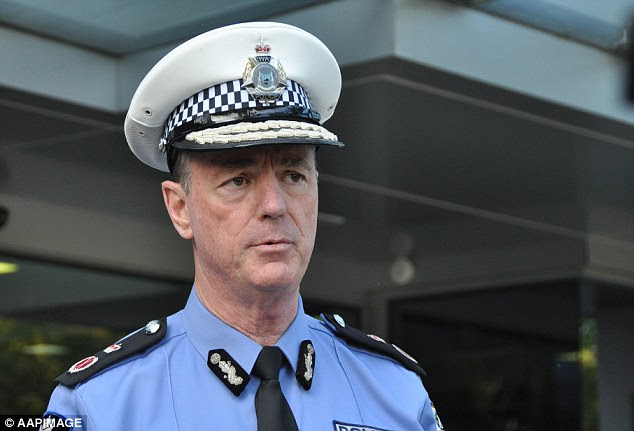
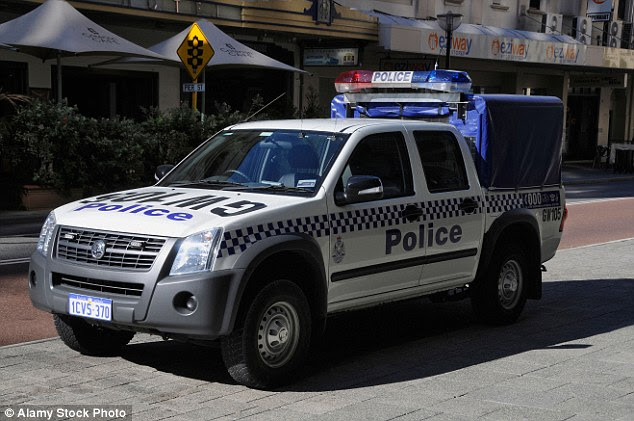
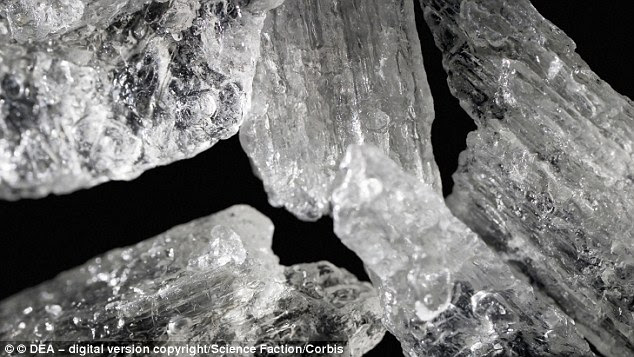







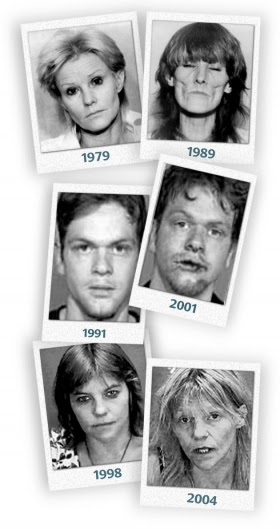







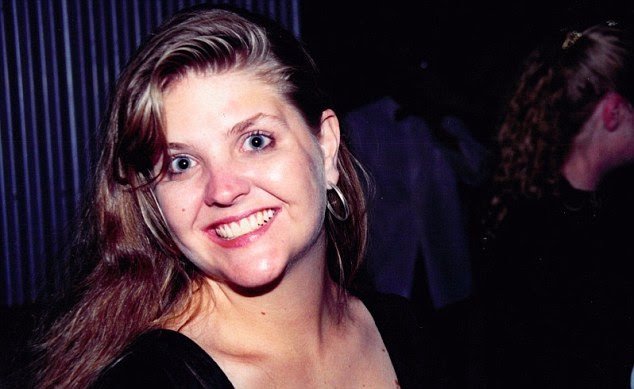



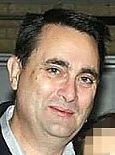

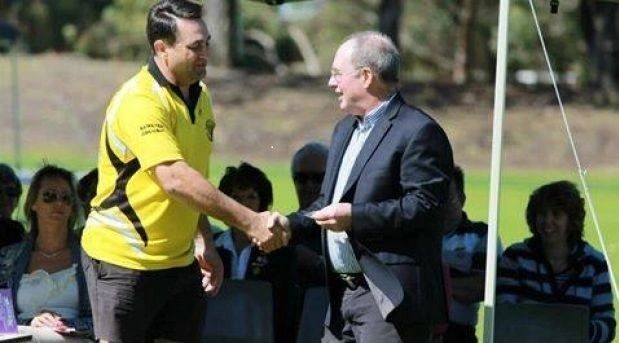






 Jane Rimmer
Jane Rimmer Ciara Glennon
Ciara Glennon





























